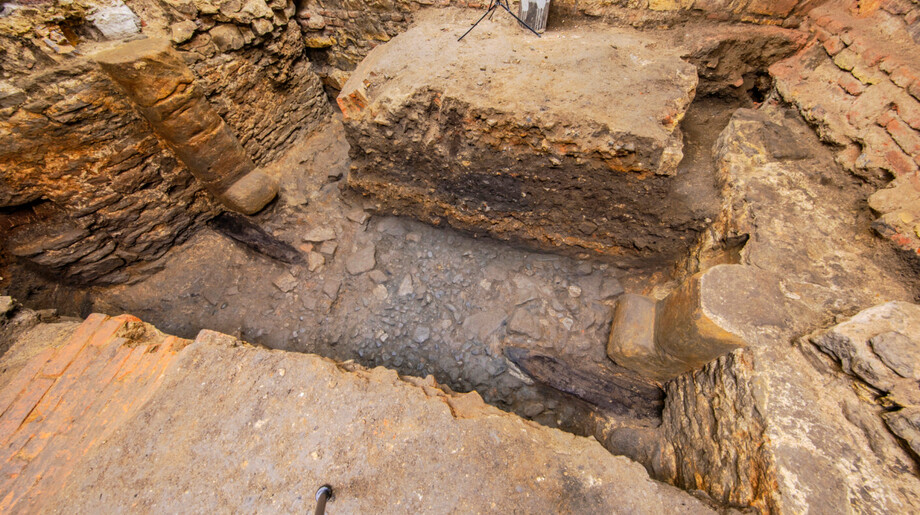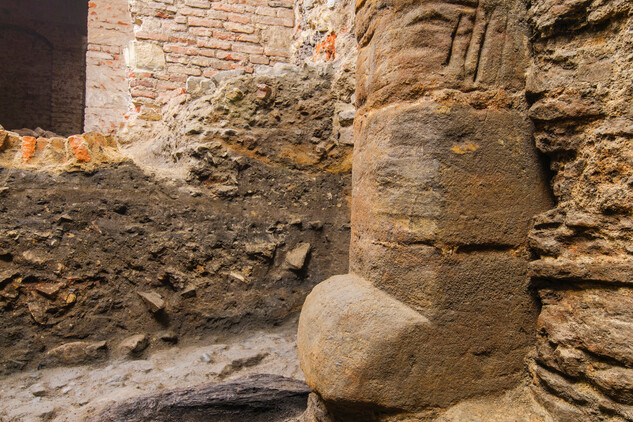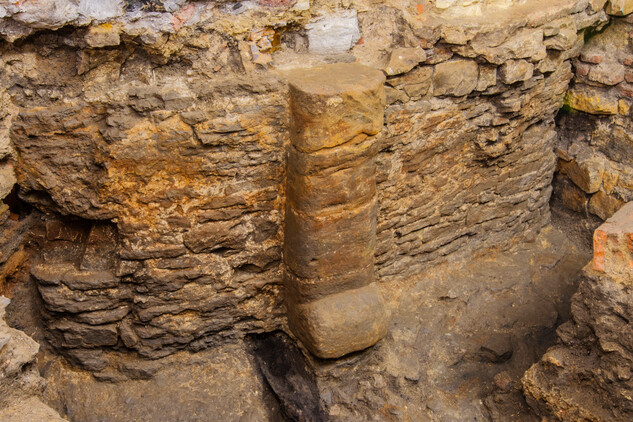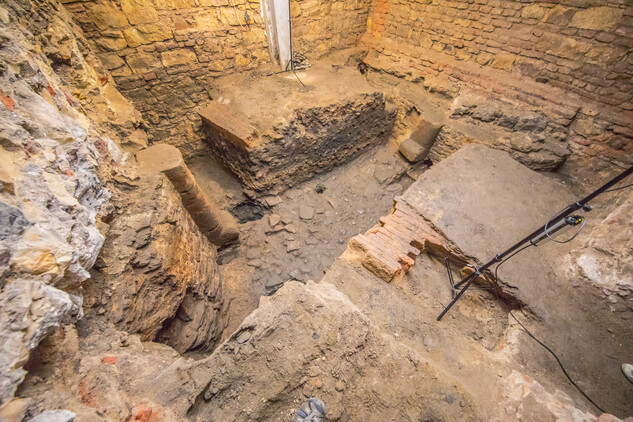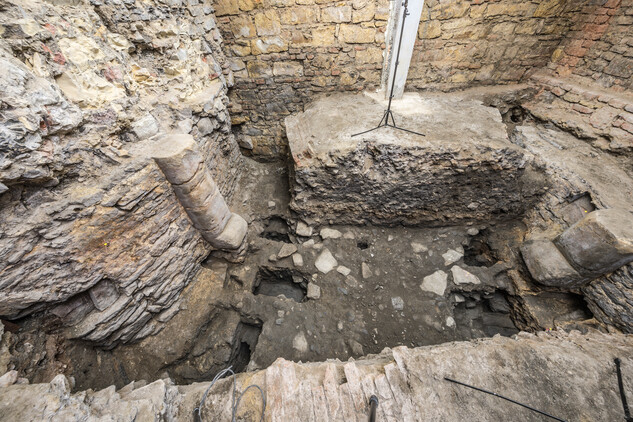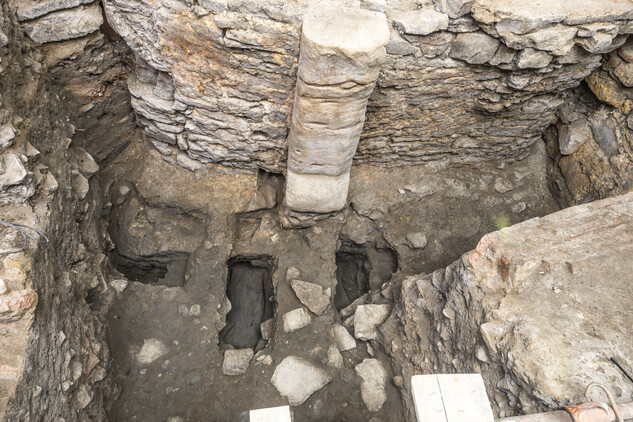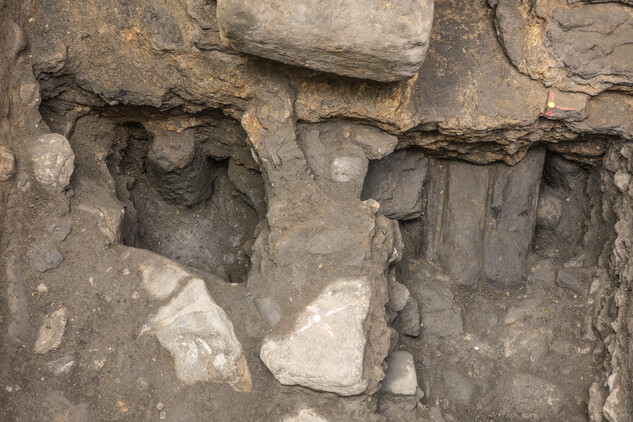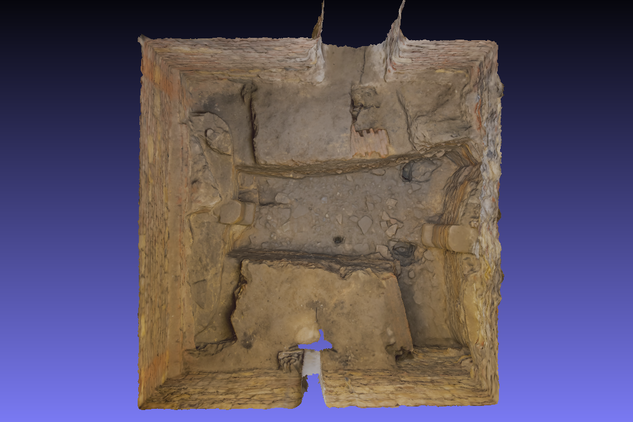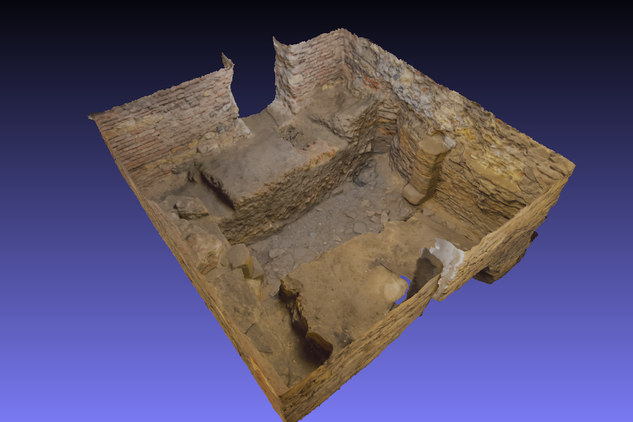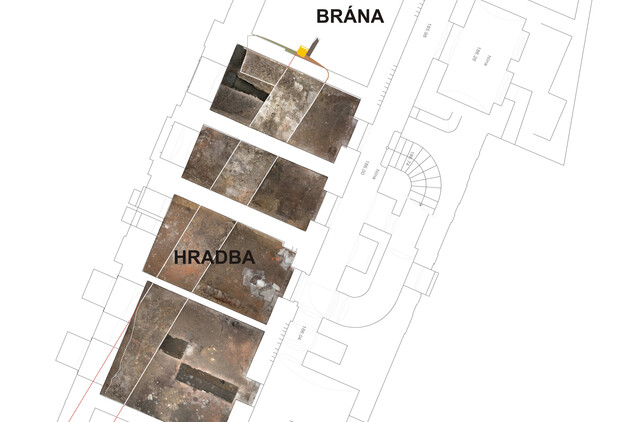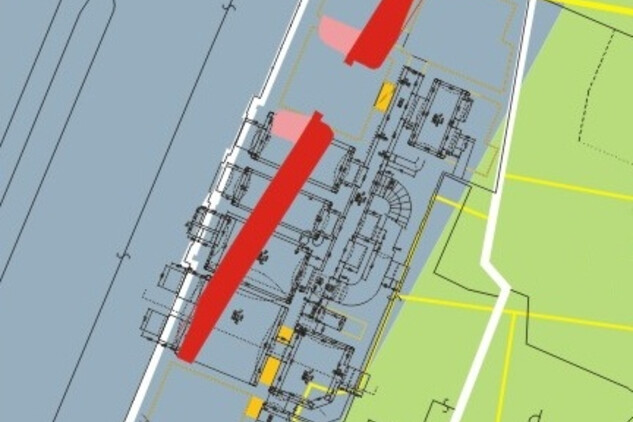In the start of 2016, the Department of Archaeology of the Prague City Museum started the archaeological survey in the apartment house in Křižovnická Street No. 71, called Na Kocandě, which was given the full reconstruction after many years of deteriorating. Once the expected line of Old Town rampart, built in the mid-13th century, was marked in the cellar, the anti-flood rampart line was revealed alongside the Vltava river, in the length of 26,5 m. The rampart is preserved under the cellar floors up to the height of 2m.
In 2017, a gate was discovered in the northern part of the cellar. Thus, the passage through the rampart was localized – in the immediate vicinity of what’s now Kaprova Street. It was used as a passage from the Old Town to the busy ford to Klárov in the Lesser Town. The gate has been only known so far from the written sources, as St. Valentine’s Gate, named after the near Romanesque church. Two building stages were identified. In the first stage, there was just a door that could be locked, about 2,55 m high. From this oldest door, the southern lining and wooden threshold were preserved. Then there was a gate with a sandstone portal, elevated, and built slightly to the south. The width of this portal was 3,6 m. The preserved parts of the new oak threshold were dendrochronologically dated to the 1260s or 1270s.
In a model example of interdisciplinary cooperation of specialists, the rampart walls and the gate were thoroughly documented. The head of the survey was archaeologis Petr Starec, the technical and historical survey of the remains of the ramparts and the gate was conducted by archaeologist and architecture historian Miroslav Kovář, Ph.D., the petrographic analysis of the masonry was made by geologist Jan Zavřel, and the dendrochronological dating was performed by Tomáš Kyncl. Geodesist Jiří Vidman provided the photogrammetric mapping and 3D modeling, and, though it wasn’t his task, filmed the whole process.
The Valentine Gate from the mid-13th century is a unique archaeological finding, a rare remnant of the Old Town fortification. For the first time during the survey of this fortification, the whole floor plan of the gate was revealed, and also the major part of the masonry. The rampart wall was preserved in the extraordinary length of over 26 m. The discovery is even more important as there’s been but scarce knowledge of rampart gates this far. The newest findings of the Old Town fortification therefore provide important information for its reconstruction.
The unique preserved relics of the Old Town fortification, including original archaeological sites, will be preserved, and, due to the willing approach of the house owner, will be accessible upon special occasions.
Nominated for the City of Prague by the regional center of the National Heritage Institute in Pragu.
The Department of Archaeological Collections of the Prague City Museum, represented by Petr Starec (Head of Archaeological Survey), was nominated for the National Heritage Institute Prize, category: Discovery / Finding of the Year. Other members: Jan Zavřel, Tomáš Kyncl, Ph.D., Miroslav Kovář, Ph.D., Jiří Vidman.
